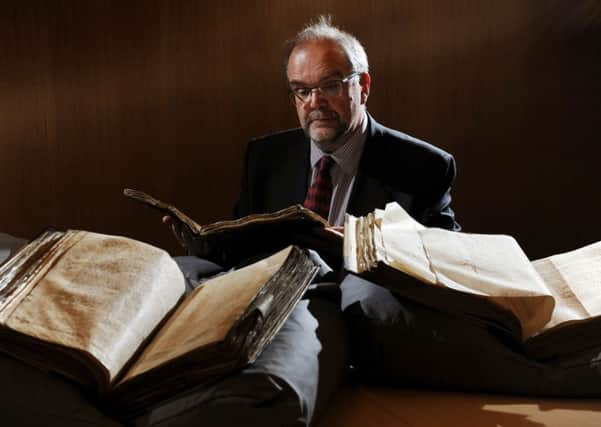The foreigners who came over here and took our jobs (650 years ago)


After the ravages of the Black Death took its toll on England’s population in 1350, the country held a certain allure for people from across Europe and beyond, with work easy to find in a county that had lost half its population.
Now, for the first time, a major new database created by the University of York has revealed extraordinary details of 65,000 immigrants who lived in England between 1330 and 1550 - at a time when the country’s population as a whole stood at just two million.
Advertisement
Hide AdAdvertisement
Hide AdThe database reveals the names, origins, occupations and households of foreign nationals and helps to provide a deep historical and cultural context to contemporary debates over ethnicity, multiculturalism and national identity.
Professor Mark Ormrod, of the university’s Centre for Medieval Studies, led the three-year project in partnership with the Humanities Research Institute at the University of Sheffield and The National Archives.
“About a century after the Black Death the population of England was still very low and there was a high amount of work available, at good rates,” he said.
“But by the end of the 1400s, having foreigners was affecting the English people more. There were debates in Parliament in the early 1500s about whether the economy could afford to have so many foreigners living here and whether they should be allowed to work.”
Advertisement
Hide AdAdvertisement
Hide AdIn Yorkshire, the largest number of “foreigners” were actually Scots - especially in York, which Prof Ormrod says shows the legend that it was legal to kill a Scotsman within the city walls to be a myth.
“After the Scots, the next largest group were the French, who in particular settled in the West Riding,” he said.
At the time, some areas of France were under English control, and the database has many immigrants listed as Norman or Breton - notably English areas.
Trawling through the records also reveals some quirks - while generally, immigrants were spread across rural and urban areas, there were some exceptions, for example, an Icelandic community in Hull.
Advertisement
Hide AdAdvertisement
Hide AdThe database shows more than 50 Icelandic immigrants in the city with surnames derived from the name of their homeland - Iselond, Iselandwoman and Iselandman.
Prof Ormrod said there was a “distinct community” of Icelanders in the city, making the most of the close trading links between the two places.
“That is quite rare, because as a whole, these people spread across the whole of Yorkshire, in urban and rural areas, but in Hull there was a community of Icelanders who would have been hosting other people coming in,” he said.
The database also reveals a slightly more sinister side to immigration, with many listed without a surname, brought to the country as servants.
Advertisement
Hide AdAdvertisement
Hide Ad“If your surname today is Fletcher or Baker or Smith, it doesn’t necessarily mean your ancestors are from England, as that name may have been impressed on them by their employer. There is a suggestion of the trafficking of people, or enforced labour, particular in some urban areas like Bristol, but also a sense coming into Hull and the City of York.”
• To search the database visit www.englandsimmigrants.com.
A new life far from home
In 1440, in the small parish of Stokesley, lived a man called Beerne.
Little is known about him, other than that he settled in the North Riding from Finnmark - the extreme north of Norway.
He is just one of the thousands of cases that particularly “jumped out” at Professor Mark Ormrod.
Advertisement
Hide AdAdvertisement
Hide Ad“What is most intriguing is the cases where people are very far away from home, and absolutely on their own,” Prof Ormrod said. “This guy in Stokesley in 1440, a very, very long way from home, with no other people from Norway near him. How must he have coped? What job did he have?
“Immigration was not just an urban phenomenon, it was spread across the countryside.”